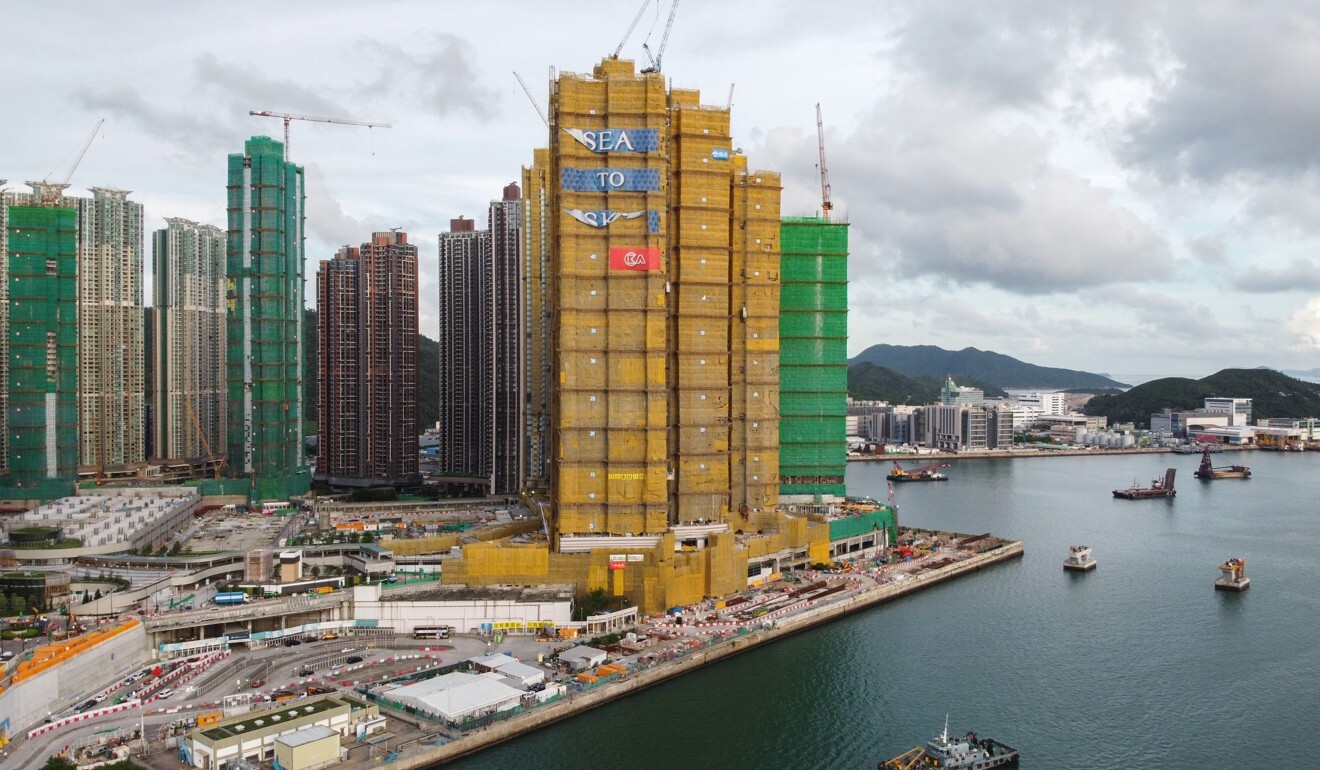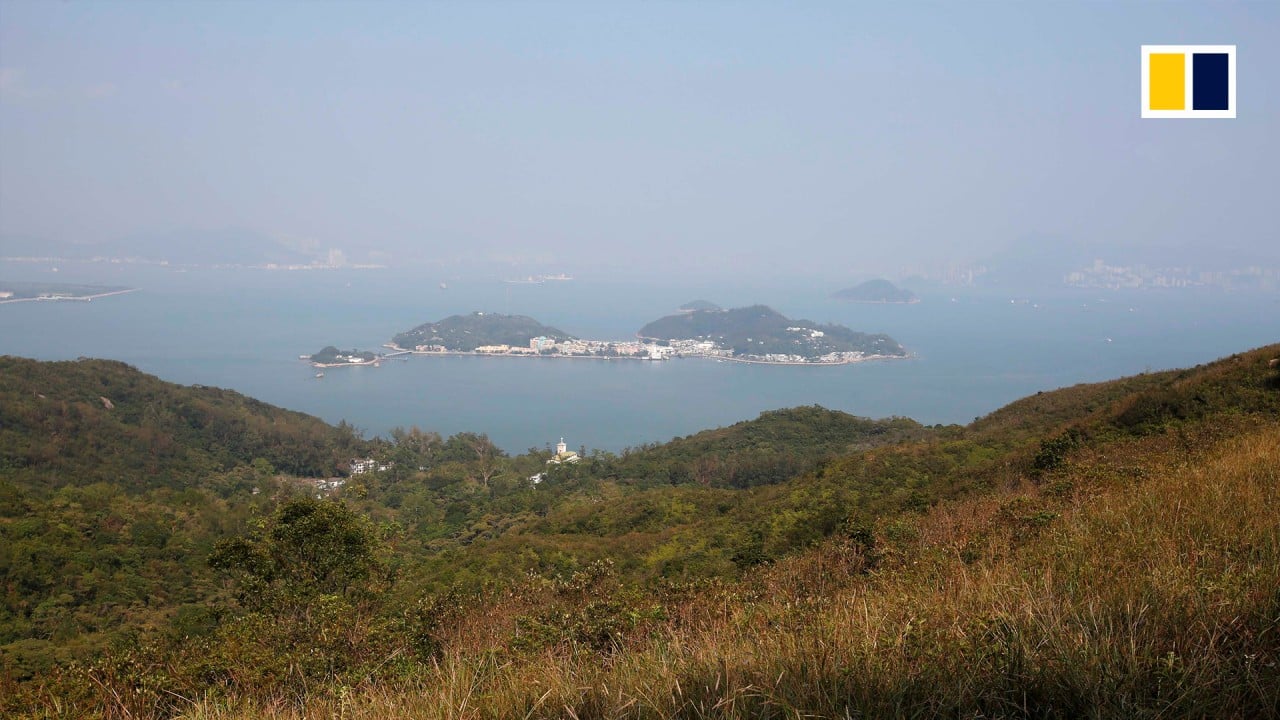
Hong Kong’s housing crisis long blamed on land shortage, but are other factors at play?
- Project delays, focus on luxury flats by city’s rail giant, which is allowed to develop land above and around stations, have caused concern
- Urban Renewal Authority, meanwhile, producing just 700 flats a year, while government bureaus sometimes find themselves at cross purposes
In the second of a three-part series on Hong Kong’s housing crisis, the Post looks at the part played by the MTR Corporation and Urban Renewal Authority in providing homes for Hongkongers. Read part one here.
Joanna Wong remembers the excitement of being among the first residents to move into Lohas Park, a seafront private estate in Tseung Kwan O in 2009.
Her family of three paid HK$11,000 a month to rent a 680 sq ft flat in one of the five blocks at The Capitol, the project’s first phase.
‘It’s sad for Hongkongers’: why many can’t afford their own homes
A dozen more phases were planned for the sprawling 32-hectare site in the New Territories, boasting names such as Le Prestige, Le Prime, La Splendour, Wings at Sea, Malibu and Sea to Sky, and blocks taller than 60 storeys.
Built by the city’s rail operator, the MTR Corporation, the project with 25,000 flats promised residents a shopping centre, a park and greenery, pet recreation areas, and landscaping with waterfalls and gardens.

For Wong and her neighbours, however, the past 11 years have meant putting up with noise and dust from never-ending construction, and the lack of amenities other than the Lohas Park railway station with its infrequent service, a supermarket, a fast-food shop and a clinic.
Most bus routes to Kowloon only became available in the past two years. Before that residents had to travel to Tseung Kwan O town centre for groceries and other services.
Although they expected the inconvenience from being the first to move in, they did not realise how long it would take before living there became more pleasant.
“I knew it would take some time before we could have a mall and other facilities, but we didn’t know how long,” said Wong, 41, who works in procurement. “We neighbours have often complained about the lack of everything here.”
The number of residents had ballooned to 70,000 by the time the first shopping centre, The Lohas, finally opened last year.

10:08
Hong Kong has until 2049 to fix its housing crisis, but is it possible?
The MTR Corp was given the right to develop Hong Kong’s largest private housing estate around the Lohas Park MTR station, which opened in 2009, under an arrangement to help subsidise the cost of rail construction and operation.
It was meant to be completed in 2019, but the project’s final phase was only tendered out to developers last October, which means it will be delayed until 2026.
The rail giant plays a key role in the supply of private housing, as it is allowed to develop land above and around its stations.
Apart from Lohas Park, it is also behind several more projects coming up in the New Territories, including a key northern link to be completed in 2034. That link is expected to make possible the development of 70,000 flats in the area, almost 1.6 times the government’s annual housing supply target.
While the Housing Authority and private developers take the lead, the MTR Corp and Urban Renewal Authority are also major players on the housing scene. The two organisations, mostly the MTR Corp, contributed 55,320 private homes in the past decade, about 30 per cent of each year’s supply on average.
MTR Corp delays and the limited scale of URA projects have added to the city’s woeful record on housing, reflected in skyrocketing prices and long queues for subsidised and public rental flats.
‘Many options, many objections’
For years now, Hong Kong’s housing crisis has been put down to a shortage of land, sparking a debate over sites that can be freed up for homes and the land reserves amassed by the city’s major developers.
Developers are known to hold more than 1,000 hectares of reserves in the New Territories, but they have denied hoarding land. Instead, they blame red tape and the lack of transport infrastructure for holding up their projects.
In 2018, a government land supply task force emphasised the importance of providing transport infrastructure in developing new towns and housing estates, saying railways should run to new areas to stimulate development.
Aside from that “infrastructure-led approach”, it also recommended ways to identify land for housing, especially in the New Territories.
These included consolidating brownfield sites in outlying areas used for recycling workshops, scrapyards, light industries and open storage, encouraging private developers to unlock their land banks, and pressing on with several new town projects.

02:43
Why Carrie Lam’s Lantau land reclamation plan is so controversial
The long-term solution was the government’s ambitious Lantau Tomorrow Vision, a hugely expensive reclamation scheme for which a three-year feasibility study has begun.
While possible solutions have been worked out, the devil remains in the details of fixing timelines to push ahead in the face of apparent lethargy, resistance and criticism from various quarters, according to Lawrence Poon Wing-cheung, a City University real estate policy expert.
He said while Hong Kong had many options, ranging from reclamation to using brownfield and recreation sites, stakeholders always argued over which to develop first.
“Objections from different parties end up delaying the supply of land for development,” he said. “Nobody is willing to compromise, which is why land cannot be released.”
For example, a government proposal to rezone a green area near Ma On Shan Country Park for housing last month drew more than 7,200 public responses, mostly objections. Green groups said the sites served as buffers to an ecologically sensitive area.
Even the city’s leaders are known to disagree over choices.
In May, former chief executive Leung Chun-ying, now a vice-chairman of China’s top political advisory body, revived his proposal to build homes at the fringe of a country park.
He noted that current leader Carrie Lam Cheng Yuet-ngor had shelved the plan, but insisted it provided a quick fix to the housing crunch.
In response, Lam said the country park plan was ruled out by public opinion in a citywide debate on land supply, adding she preferred a more “sustainable approach”.
According to her, the government has identified enough sites to meet its 10-year public housing target to 2031, but only a third of the flats can be completed in the first five years, and building the rest on time will be a challenge.
Critics have warned that the government’s increasing emphasis on public housing will leave less land for private housing. But officials said the land supply would be boosted by the developers’ reserves and projects by the MTR Corp and URA.
Hold MTR responsible for shoddy property project, Hong Kong lawmakers urge
Railways and new towns
The government is the largest shareholder in the MTR Corp, which is building several new rail sections in urban areas, Tung Chung, Tuen Mun South and the northern New Territories, indicating where new towns and housing estates are likely to come up.
Property projects above and around MTR stations and train depots have long been a major source of private housing supply. But the company has often been accused of being too slow, with Lohas Park just one example.
In 2014, then secretary for development Paul Chan Mo-po noted that the MTR Corp had not launched any new projects for three years, and warned that the government could take back the development rights if the company did not step up.
The MTR Corp called tenders for new work at Lohas Park and two other sites later that year.
The government has also asked the company to build new rail lines earlier and not wait until new towns or large-scale housing estates are completed, but lawmakers were dismayed to learn recently that two rail projects in the New Territories had been delayed.

Work on the station for the new development area of Hung Shui Kiu along the West Rail line will only start in 2024, the same year the first 4,000 residents are expected to move in. They will have to wait six years for their station.
Also delayed is a second and bigger rail project, the Northern Link, which will serve the new town of Kwu Tung North. Its second phase will connect the existing East and West Rail lines, unleashing the development potential of rural land there.
Construction of Kwu Tung station will only start in 2023, nine years later than the projected completion date.
These delays have an effect on the launch of new housing projects, and provision of services to residents who move in early.
Tony Tse Wai-chuen, lawmaker for the architecture, surveying and planning sector, said he and other Legislative Council members were disappointed that the infrastructure-led policy was not implemented and residents’ interests were sacrificed.
“I understand the MTR has its business considerations and its need to maximise profit for shareholders, but it is positioned as a key public transport service provider,” he said. “You might be making a loss here, but you’re earning much more elsewhere, including property development.”

Surveyor Lau Chun-kong said MTR Corp delays also affected private property projects, because developers hesitated to sell their flats too early. They fetch a premium when the train stations are open.
In a reply to the Post, the MTR Corp said the government had only invited it to proceed with the detailed planning and design of the Northern Link, and Hung Shui Kiu station, in December 2020 and May 2021 respectively.
There were a wide range of factors affecting when construction could start on the station, it said, including a technical study, land resumption and stakeholder engagement, as well as the need to support the government’s land creation initiatives.
The first population intake of 4,400 was outside the 500-metre catchment area of the proposed station, and those residents would be expected to use a shuttle service to get to the station, it said.
As for the Northern Link, the timetable for the second phase had yet to be confirmed, although it was scheduled for completion in 2034, the company said. It noted that the government would provide other public transport to serve the new area.
Developers seek approval for 16,000 new flats under Hong Kong land scheme
MTR to build subsidised housing?
The MTR Corp has also been accused of delivering expensive private flats but doing little to ease the demand for public housing.
The company has operated mostly on a “rail plus property” model. It is granted the right to develop land alongside rail alignments, and the revenue from property helps to subsidise its construction and operating costs.
During a Legco sitting last month, lawmakers accused the company of making excessive profits by building luxury properties over stations that even middle-class Hongkongers could not afford.
For example, at The Pavilia Farm III above Tai Wai MTR station in Sha Tin, the last batch of flats were sold in June at an average of HK$24,858 (US$3,850) per square foot – similar to the HK$22,000 to HK$30,000 per square foot going rate for second-hand homes at luxury development Robinson Place in Mid-Levels on Hong Kong Island.
Border area near Shenzhen has potential for more projects, homes: Paul Chan
Lawmakers said the sites should be used for public or subsidised housing instead, considering the long queues of applicants. Some even wanted the government to end the company’s property development rights.
But Secretary for Transport and Housing Frank Chan Fan said using these prime sites for subsidised housing would hurt the aim of subsidising the cost of railway projects.
The MTR Corp said railway development strategy was driven by the government, and the railway plus property model had been in use for more than 40 years. This had enabled it to finance railway construction and maintenance with the property profits, it added.
After the government grants property development rights, the corporation would then bear all the commercial risks and the fluctuations in the property market, it said.
Former secretary for transport and housing Anthony Cheung Bing-leung said it was viable to build subsidised homes over or near MTR stations.
“It is just a matter of calculation of the land premium, it doesn’t have to be a major shift in principle,” he said.
“Whether subsidised homes at an MTR station can capture enough profit to fill the funding gap depends on the location and other factors,” he added, referring to the difference between the cost to build and operate a station for 50 years, and its projected income. “It is not necessarily loss-making.”
Cheung said that if the sites over stations were kept for private housing, the surrounding ones could be zoned for public housing.
URA’s mission expanded
Like the MTR Corp, the URA has also long played a role in supplementing the supply of private housing in areas where it has redeveloped old parts of the city. But its contribution in the past five years has been limited, with its projects launched providing fewer than 700 flats a year.
The self-financing statutory body was given a new mission in 2019 by the city’s leader to provide more subsidised homes and starter homes, for first-time buyers who meet the income requirements, in its redevelopment projects.
So far, it has committed to three starter home projects – two in To Kwa Wan involving 753 flats, and one in Tai Hang Sai Estate in Kowloon, with 2,000 flats.
Other than those, the URA will continue focusing on private housing through redevelopment of old districts, and has earmarked HK$100 billion to build 18,000 private flats over the next five years.
This includes the possible redevelopment of Yau Ma Tei and Mong Kok districts in Kowloon. A public consultation was expected to start this year, but the URA has hinted its work might be limited to selected pilot sites, as clearance and compensation would be time-consuming and costly

In an earlier interview with the Post, Financial Secretary Paul Chan Mo-po said the most important thing for the URA was to move different projects forward, and the government would stand ready to give financial support, including an injection of funds.
Chan Kim-ching, a former activist and geography postgraduate who founded the Liber Research Community which focuses on land use issues, said the URA should consider itself relevant to Beijing’s recent directive for Hong Kong to eliminate tiny subdivided flats and improve housing.
“In their redevelopment projects, the URA has demolished many subdivided homes, giving affected tenants the choice of taking cash or going to public rental housing,” he said.
However, the URA is not responsible for providing homes to rehouse displaced tenants, and their compensation is usually only enough for them to look for another subdivided flat to rent.
“The URA should reserve a certain proportion of its new homes for the public sector, otherwise it is only kicking the problem somewhere else,” Chan said.
Urban Renewal Authority defends acquisition offer to Kowloon City flat owners
Government structure needs fixing
Chief Executive Carrie Lam has pledged to focus on solving the city’s housing woes in the final year of her term, saying she will strengthen top-level supervision to prevent “fragmentation of responsibilities” among government departments dealing with land supply.
Poon, a Town Planning Board member and former URA board member, said to really avoid fragmentation of duties, the government structure should be reformed.
The City University real estate expert said as housing and land matters now came under the Transport and Housing Bureau and the Development Bureau respectively, this had caused inefficiency in policymaking decisions and internal coordination.
“For example, if the URA is tasked to do subsidised housing, it not only has to discuss with its supervising bureau, the Development Bureau, but also the Housing Bureau,” Poon said. “But the latter is an outsider not represented on the URA board, so it takes time to work things out.”

He suggested merging the two bureaus to coordinate all housing, land and planning matters, as it was before 2007.
Ultimately, Poon said, the government needed stronger political will to tackle the land supply problem.
“When there are disputes, officials find them very difficult to manage. They are very afraid of objections,” he said. “If everyone insists that their land resource must be protected, you end up with brownfield, country park, green belts and agricultural land all being unable to be used.
“The government needs to listen to different opinions but … [also] needs to be more decisive and identify which objections are valid and which are not, and say no. There needs to be a plan to solve the issue.”
The first instalment of this three-part series examined why housing demand outstrips supply in Hong Kong. The final part will look at property developers and their role in the city’s dire housing situation.





